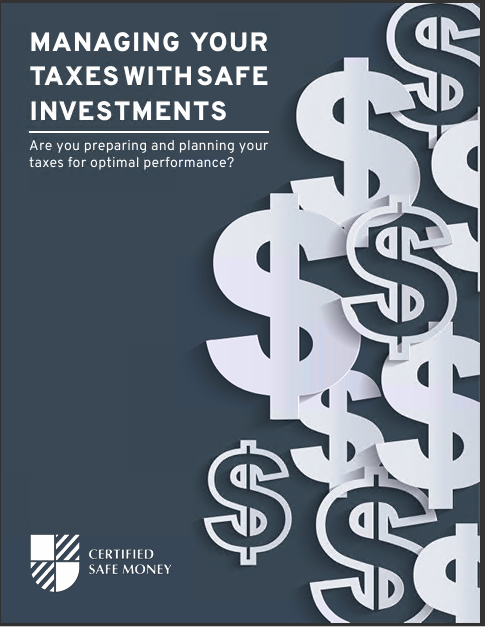Types of Life Insurance What is the Difference Between Term and Permanent Life Insurance?
Today, there are many different life insurance coverage options to choose from – and while a variety of choices can help you to customize your plan better, all of the “moving parts” can also make deciding to buy a life insurance policy somewhat confusing. So, in order to narrow down your options, an excellent place to start is learning what the difference is between term and permanent life insurance.
Term, Whole Life, Indexed Universal Life – What is the Difference?
While there are many different ways to structure a life insurance policy, there are actually just two primary coverage categories. These are term and permanent. Within each of these broad policy types, though, there are many ways to structure the coverage and the benefits.
Term Life Insurance
Term life insurance is often referred to as the most basic form of life insurance coverage. That’s because, with a term insurance policy, there is death benefit protection but no cash value or savings component.Because of that, term can oftentimes be much less expensive than a comparable permanent life insurance policy, with all other factors being equal. This is particularly true if the insured is young and in good health at the time they apply for the policy.As its name implies, term life insurance only remains in force for a set period of time – or term – such as ten years, twenty years, or even thirty years. Many insurance carriers also offer one-year renewable term life coverage.Because term life insurance has an “expiration date,” these plans will need to be reapplied for at the end of the time period. In some cases, a term insurance policy may be converted over to a permanent policy so that the insured can continue to have protection for the remainder of his or her lifetime (provided that the premium is paid).There are several types of term life insurance, including:
- Level Term – With a level term life insurance policy, the amount of the death benefit and the premium amount will remain the same throughout the entire “term” of the coverage.
- Increasing Term – The coverage amount on an increasing term policy will rise over time. (The premium may or may not also go up.)
- Decreasing Term – The amount of coverage on a decreasing term life insurance policy will decrease over time. These policies may be a good fit for someone who wants to ensure that their loved ones can pay off a decreasing mortgage balance. So, in this case, the reduction in coverage may correspond to the remaining mortgage balance over time.
Pros and Cons of Term Life Insurance
Advantages of Term Life InsuranceDrawbacks of Term Life InsuranceLow premium costCoverage is only in force for a set period of timeBeneficiary receive the death benefit proceeds income tax-free No cash valueA good solution for “temporary” coverage needsMust requalify at the end of the term at then-current premium rates (which are usually higher due to the insured’s older ageMay be convertible to permanent life insuranceNot a good solution for ongoing coverage needs or business succession planning
Whole Life Insurance
Whole life is a type of permanent life insurance coverage. With these policies, there is a death benefit and a cash value component. Although the premium on a whole life insurance policy may be higher than on a term policy, there is no expiration date on the death benefit. In addition, the amount of premium is locked in for life. Therefore, as the insured gets older – and even if he or she contracts an adverse health condition – the whole life insurance will remain in force for the same premium cost, making this a beneficial addition to a good retirement plan.The funds that are in the cash value component of a whole life insurance policy will typically rise over time, based on an interest rate that is set by the insurance company. The growth that takes place in this account is tax-deferred. This means that there are no taxes due on the gain unless or until the funds are withdrawn.Some people use whole life insurance as a way to add to their tax-advantaged savings, because there is no annual maximum contribution like on an IRA (Individual Retirement Account) or employer-sponsored retirement account.It may also be possible to borrow against the cash value of a whole life insurance policy. In this case, the funds may be accessed tax-free. In addition, the policy’s cash account will continue to grow and compound as if the amount of borrowed funds were still there.Many retirees use whole life insurance policy loans to supplement their lifetime income on a tax-free basis. While a whole life insurance policy loan will accrue interest, it doesn’t necessarily have to be repaid by the borrower. Rather, when the insured passes away, funds from the death benefit proceeds can be used for the loan payoff, and the beneficiary can collect the remainder.
Whole Life Insurance Pros and Cons
Advantages of Whole Life InsuranceDisadvantages of Whole Life InsuranceOffers tax-advantaged cash value buildupHigher premium for a comparable term life insurance policyDeath benefit proceeds are locked inReturn on the cash value is lowPremium amount is set for lifeMay withdraw or borrow funds from the cash value
Indexed Universal Life Insurance
Indexed universal life (or IUL) insurance is another type of permanent life insurance option. These policies also provide a death benefit and a cash value component. One of the biggest differences between indexed universal life and whole life insurance is the way the return in the cash account is determined.For example, the funds in an IUL cash value track one or more market indexes, such as the SP 500. (There is also typically a fixed account option in these plans where some of the cash value funds may be placed.)If the underlying index performs well during a contract year, then the cash value is credited with a positive return – typically up to a set maximum, or “cap.” However, if the underlying index performs poorly, the cash value will not incur a loss. Instead, it is credited with a certain minimum guaranteed amount (which is usually in the range of 0% to 2%).Because of that, the principal remains safe in an indexed universal life insurance policy, and in turn, there is no need to “make up” for losses. Rather, the funds can instead continue to build upon prior gains when the index performs in the positive again.Similar to other types of permanent life insurance policies, the money in the cash component of an IUL plan are allowed to grow on a tax-deferred basis. Likewise, cash may be accessed from the account by way of a withdrawal or a tax-free loan. (When withdrawing money from a permanent life insurance policy, you may incur taxes on any gains that are accessed and/or a surrender – or early withdrawal – penalty.)
Indexed Universal Life Insurance (IUL) Pros and Cons
Advantages of Indexed Universal Life InsuranceDisadvantages of Indexed Universal Life InsurancePermanent life insurance protectionPremium may be higher than a comparable term life insurance policyCash value grows tax-deferredLimited upward growth due to caps, spreads, and participation ratesOpportunity for higher return than with whole life insurancePremium amount may varyCould use tax-free loan(s) to supplement retirement income
Items to Consider Before Making a Life Insurance Purchase
When financial planning for retirement or any other financial decision, there are some items that you should consider before purchasing any type of life insurance coverage. These should ideally include the following:
Coverage NeedsA primary consideration when buying life insurance is what you actually want the coverage to do for you. For instance, if you want your family to remain in your current home if the unexpected occurs, then a thirty-year term life policy could be your best option.Likewise, if you are young and in good health, but you also have budgetary constraints, a term plan could provide your loved ones with the financial protection that they need – and if the policy is convertible, you could switch over to a permanent form of coverage in the future.Alternatively, if you are looking for lifetime coverage to use for estate planning or business succession needs – or if you want to ensure that your surviving spouse or partner can continue to collect safe funds for retirement if they lose access to your pension or Social Security benefits – then a permanent life insurance policy could be right for you.
Age and Health Condition of ApplicantAn applicant’s age and health condition can play a key factor in how much life insurance will cost, as well as whether or not they will even qualify for a policy. For instance, if you have previous heart issues, it may be more difficult to qualify for coverage.In addition, because life insurance companies base their premiums in large part on an insured’s life expectancy, the older an applicant is, the more likely it is that they will pay more for a policy.
UnderwritingLife insurance companies want to know how much risk they are taking on if they accept an applicant for a policy. Therefore, they will typically review a wide array of information before they approve someone.This includes the applicant’s age and gender, as well as prior and current health conditions. Likewise, information regarding the applicant’s family health history may also be required. In some instances, a review of the applicant’s health history from his or her doctor is needed.Some of the other key factors that a life insurance underwriter will consider can include:
- Prescription medications that the applicant is taking
- Whether or not the applicant is a smoker (which can include cigarettes, cigars, pipes, chewing tobacco, and the use of marijuana)
Depending on the amount of coverage being applied for, it may be necessary for a life insurance applicant to undergo a medical exam. This examination typically consists of meeting with a paramedical professional who will take vital signs, such as blood pressure and heart rate. They may also require a blood and urine sample. These will be analyzed to determine whether or not the individual has any underlying health conditions.While some life insurance policies are “fully underwritten,” though, there are others that may not require underwriting. For instance, a guaranteed issue policy is a life insurance plan that does not require the applicant to go through the underwriting process. (These policies will also typically cost more in premium, too).
Cost of the CoverageCertainly, another key factor to consider is the premium. The amount of the premium is determined on a number of criteria, such as:
- Age
- Gender
- Type of coverage
- Amount of coverage
- Health
- Prescription medications
- Family health history
- Lifestyle
- Occupation
- Hobbies (including dangerous activities like rock climbing or scuba diving)
- Insurance company
Underlying Insurance CompanyThe insurance carrier that is offering a policy should be considered, as well. One reason for this is because the premium can differ from one insurer to another – even with the very same type and amount of coverage.In addition, you want to ensure that the carrier is strong and stable financially and that it has a good reputation for paying out claims. You can find out more information by going to the insurer’s page on the Better Business Bureau’s website.In addition, checking the insurance company’s ratings from A.M. Best, Standard Poor’s, Moody’s, and/or Fitch can also give you an idea of how the carrier does business and how sturdy it is from a financial standpoint.
How to Choose the Best Life Insurance Policy
The purchase of life insurance can be somewhat difficult unless you have an understanding of how different policies work, and where they may (or may not) fit in with your overall financial objectives.Working with advisors can help. If you would like to set up a time to talk with an insurance expert, please contact us at info@certifiedsafemoney.com













